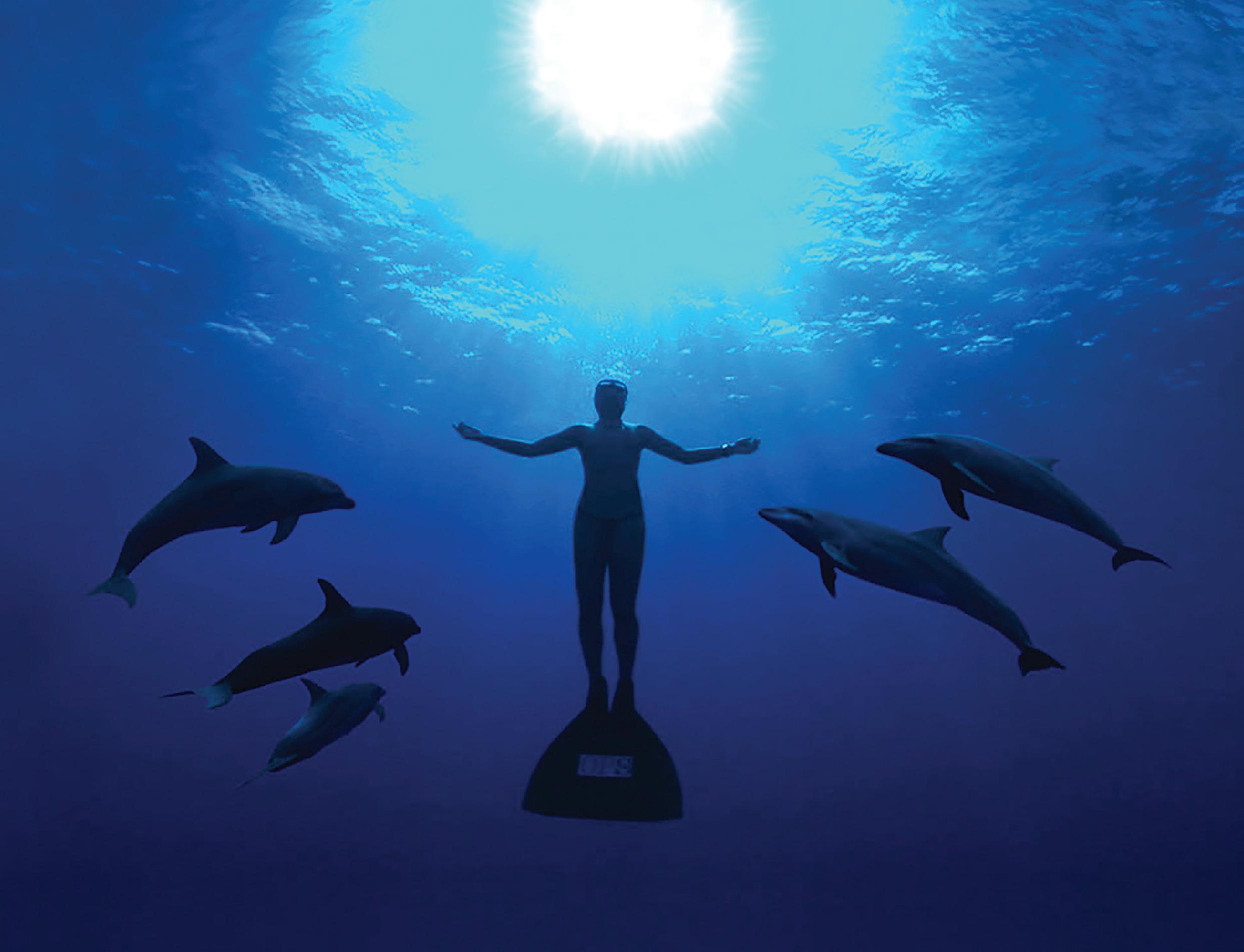
3 minute read
imperialism of ‘the cove’
from ATLAS VOLUME 15
The Cove (2009)
The power of selection, emphasis and omission. By Jasmin Naish
Advertisement
‘The Cove’ (2009) is a critically acclaimed documentary, directed by Louie Psihoyos, scoring a hefty number of awards, such as best documentary at the Academy awards. The documentary follows Ric O’Barry and a group of environmentalists from the Ocean Preservation society as they aim to expose the killing of dolphins yearly from Japanese fisherman in the town of Taiji.
Coming from a Western society, audiences instantly sympathised with the fate of the dolphins being culled in Taiji. However, what needs to be addressed is the imperialistic nature of the documentary, which forces Western values onto the Japanese.
Western societies generally hold the belief, Christianity in particular, that there is a single God, monotheism. Humans, beings that hold not only the most intelligence, but also consciousness, are essentially the closest thing to God. Due to this, a hierarchy of value is placed upon animals that hold a higher amount of intelligence.
Throughout documentary, dolphins are constructed as the closest animals to humans on the planet. This is done through the personification, or ‘anthropomorphism’ of the dolphins. Psihoyos highlights dolphin’s connection with humans, such as cases of dolphins saving drowning people, or their ability to communicate with one another within a sophisticated language we are yet to understand.
In contrast, much of the Japanese population follow Shinto-Buddhism, a polytheistic religion who believe in many Gods. A belief that stems from this religion is the idea that there is no hierarchy within nature, and every form of life is equally precious. So, by eating any animal, we become guilty. This applies to all animals however, who serve one another for different purposes. All animals are respected for the purpose they serve. This is evident in the sacred treatment of whales in the whaling industry, as the souls of whales are prayed for that they make it to the afterlife.
Psihoyos represents the Japanese fishermen, men who are simply trying to make a living, as antagonists who are greedy and violent. These men are filmed without their consent and are further edited and manipulated to appear in such a way. Ric O’Barry even goes as far to say, “They’d kill me if they could. And I’m not exaggerating”. The selection, emphasis and omission of this footage constructs an oversimplified stereotype of the Japanese population as vicious and greedy. Yet this could not be further from the truth.
The lack of representation of Japanese protagonists in the documentary do not inspire or encourage their population to make change, but rather offends them. As Japan is a town that originally lived off of vegetables, rice and fish, and was then introduced by Westerners to hunt for meat, it is seen by their perspective to be rather hypocritical. The killing of dolphins is only a small percentage in comparison to America’s killing and consumption of pigs and cows. Americans consume beef at a much higher level than Japanese people, consuming 25.8 kg of beef per year in comparison to 6.5kg.
Due much of Japan’s belief in Shinto-Buddhism, and the lack of hierarchy they place on forms of life, they do not see how it is fair for the West to criticise when they are only doing the same thing to other animals. A Japanese audience could see this as a form of ethnocentrism, with the West applying judgement on other cultures against their own for reference.
This is imperialistic, with Psihoyos attempting to spread Western values and cultural practises onto other countries. This lack of understanding is evident, when Ric O’Barry says, “If you didn’t know what’s going on over here, you would think this is a town that loves dolphins”. This is said following the selection of iconic images and sculptures of dolphins and whales within Tai Ji. However, it can be understood by a Japanese audience that this is done to honour and respect the taken and departed souls of the animals.
Overall, the film poorly represents the Japanese in an oversimplified manner. He has spread the notion that western, particularly America’s cultural beliefs are superior to surrounding countries, such as Japan.
As a result, the argument loses its emotional impact on Japanese audiences, who had the possibility of being inspired to take action within their own country. Rather, Psihoyos has successfully made much of his Japanese audience resistant to the ideas displayed in the film, guilty of hypocrisy and ignorance.









